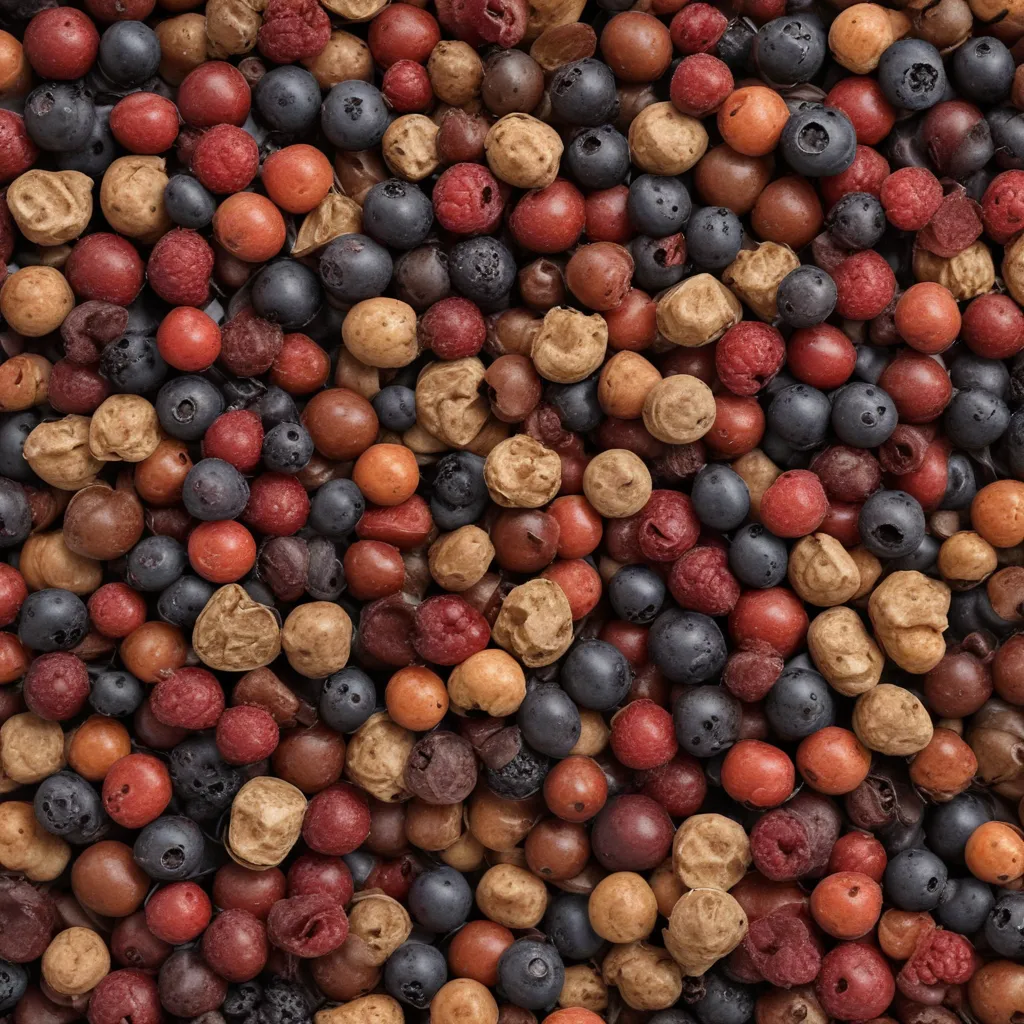
Wine enthusiasts and health-conscious consumers alike have long been fascinated by the complex array of polyphenolic compounds found in wine. These versatile plant-derived molecules not only contribute to a wine’s flavor and mouthfeel, but also bestow remarkable antioxidant properties that have been linked to a wide range of potential health benefits. While the polyphenolic profiles of traditional grape wines have been extensively studied, the untapped potential of lesser-known fruit and flower-based wines remains a captivating area of exploration.
Phenolic Compounds
Polyphenols in wine encompass a diverse array of chemical structures, including flavonoids (such as anthocyanins, flavonols, and flavan-3-ols) and non-flavonoid compounds (like phenolic acids and stilbenes). The specific polyphenolic composition of a wine is heavily influenced by the type of fruit or flower used, as well as the winemaking techniques employed.

Grape wines, for instance, are renowned for their high concentrations of catechin, epicatechin, resveratrol, and various anthocyanins – all of which contribute to the wine’s distinctive color, astringency, and potential health benefits. In contrast, cherry wines are reported to be rich in naringenin and apigenin, while rhododendron wines have been found to contain substantial amounts of myricetin, quercetin, and kaempferol.
Flavonoids
Flavonoids, a subclass of polyphenols, are considered the primary drivers of a wine’s antioxidant activity. These compounds possess the unique ability to scavenge free radicals, chelate metal ions, and modulate enzymatic activities – all of which are crucial in maintaining cellular homeostasis and mitigating oxidative stress.
Non-Flavonoid Phenols
Alongside flavonoids, non-flavonoid phenols, such as phenolic acids and stilbenes, also play a significant role in a wine’s antioxidant capacity. Phenolic acids, including hydroxybenzoic and hydroxycinnamic acids, have been shown to exhibit potent free radical scavenging abilities and the potential to inhibit pathogenic bacterial growth. Stilbenes, exemplified by the renowned resveratrol, have garnered attention for their cardioprotective, anti-inflammatory, and even potential anti-cancer properties.
Antioxidant Capacity
The remarkable antioxidant potential of wine has long been a topic of fascination and scientific inquiry. Numerous in vitro and in vivo studies, as well as epidemiological evidence, have suggested that moderate wine consumption, despite its ethanol content, may confer a lower risk of various chronic diseases, such as cardiovascular disorders, type 2 diabetes, and neurodegenerative conditions.
Radical Scavenging Activity
The polyphenols in wine are primarily responsible for their ability to scavenge free radicals and reactive oxygen/nitrogen species. Techniques like the ABTS and DPPH assays have been widely employed to assess the free radical scavenging capacity of different wine samples, with rhododendron and plum wines often emerging as standout performers.
Reducing Power
The ferric reducing antioxidant power (FRAP) assay provides a measure of a wine’s reducing capacity, which is directly correlated with its polyphenol content. Rhododendron and plum wines have consistently demonstrated impressive reducing power, often exceeding the values observed in traditional grape wines.
Metal Chelation
In addition to their radical scavenging abilities, certain polyphenols in wine, such as flavonoids, have the capacity to chelate metal ions, thereby preventing them from participating in harmful oxidative reactions. This metal-chelating property contributes to the overall antioxidant defense mechanisms exhibited by wine.
Extraction Methods
The polyphenolic composition and antioxidant capacity of wines are highly dependent on the extraction methods employed during the winemaking process. Factors such as the solvent type, solvent-to-sample ratio, extraction temperature, and extraction time can significantly influence the yield and profile of the polyphenolic compounds.
Solvent Extraction
Conventional solvent extraction techniques, using solvents like methanol, ethanol, or their aqueous mixtures, are widely employed to recover polyphenols from wine samples. The choice of solvent system is crucial, as it can selectively target different classes of polyphenols based on their solubility characteristics.
Ultrasound-Assisted Extraction
The use of ultrasound-assisted extraction has gained traction in recent years, as it can enhance the extraction efficiency of polyphenols by disrupting plant cell walls and facilitating better solvent penetration.
Microwave-Assisted Extraction
Similarly, microwave-assisted extraction has been explored as a rapid and energy-efficient technique for the isolation of polyphenols from wine and other plant-based matrices.
Analytical Techniques
Accurate quantification and identification of the polyphenolic compounds present in wine require the application of advanced analytical techniques, such as high-performance liquid chromatography (HPLC), spectrophotometric assays, and mass spectrometry (MS).
High-Performance Liquid Chromatography
HPLC, coupled with various detection methods (e.g., diode-array detection (DAD), tandem mass spectrometry (MS/MS), or time-of-flight mass spectrometry (TOF-MS)), enables the separation, identification, and quantification of individual polyphenolic compounds in wine samples.
Spectrophotometric Assays
Colorimetric techniques, including the Folin-Ciocalteu and Folin-Denis methods, provide a convenient way to determine the total phenolic content of wine samples. Additionally, the aluminum chloride (AlCl3) assay is commonly used to estimate the total flavonoid content.
Mass Spectrometry
High-resolution mass spectrometry techniques, such as liquid chromatography-mass spectrometry (LC-MS) and ultra-high-performance liquid chromatography-tandem mass spectrometry (UHPLC-MS/MS), offer unparalleled sensitivity and selectivity in the identification and structural elucidation of complex polyphenolic profiles in wine.
By leveraging these advanced analytical tools, researchers have been able to unveil the intricate polyphenolic compositions of a diverse array of wine samples, paving the way for a deeper understanding of their antioxidant properties and potential health benefits.
As the wine industry continues to evolve, the exploration of non-grape-based wines, such as those crafted from plums, cherries, and rhododendrons, has gained increasing attention. These unique wine varieties have the potential to not only diversify the wine market but also contribute to our understanding of the vast and fascinating world of polyphenolic compounds and their antioxidant capacities. Through continued research and innovation, we can unlock the full potential of these lesser-known wine varieties and enhance the culinary and wellness experiences of wine enthusiasts worldwide. Visit https://www.winegardeninn.com to learn more about our commitment to sustainable winemaking and gourmet hospitality.
